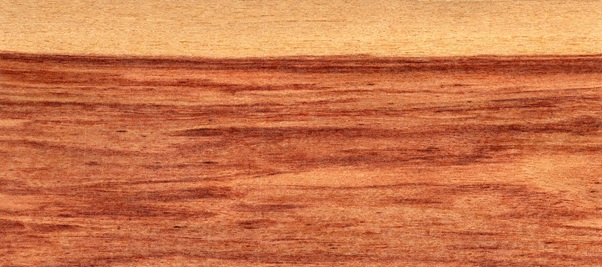The Properties of Tulipwood
Contents |
Introduction
Tulipwood is the pinkish and yellowish wood which is wielded from tulip tress found in the Eastern side of North America and parts of China. In America, the wood is referred to tulip poplar, even though the tree has no relation to the poplars. This reference is due to the trees height, which can exceed 100 feet.
Tulipwood is very light, approximately 490kg per cubic meter, but it is very strong. The wood can be stained very easily, and in some cases, is used as a low-cost alternative to walnut and cherry, particularly in furniture and doors.
Properties
The green colour of tulipwood darkens upon exposure to UV light, turning brown. It has a medium to fine texture, with the size of the sapwood and other characteristics varying upon the region it is grown in.
Tulipwood offers many beneficial properties for use:
- Low bending.
- Shock resistance.
- Offers stiff and compressed values.
- It is strong for its weight, making it ideal for laminated beams and structures.
- It is a common material due to its versatility and dimensional stability.
- It has little tendency to split when nailed.
- It holds paint, enamel and stain very well.
Brazilian Tulipwood
Brazilian Tulipwood is a different species of a very dense, high-quality wood. It is known to be yielded by Dalbergia decipularis, a species restricted to a small area in Brazil. This type of wood can come in a variety of colours within its appearance, which can be streaked with yellows, reds, oranges and pinks.
The pores on this material are open and medium-sized, with the grain straight, offering a fine texture. Brazilian Tulipwood is a common material due to its resistance to decay and insect attack. With its high density, it turns very well and holds a high polish.
Common uses for Brazilian Tulipwood include:
- Fine furniture.
- Musical instruments.
- Small turned objects.
- Veneer.
- Marquetry.
Australian Tulipwood
Australian Tulipwood is the common name of Harpullia, with certain varieties prized for their dark coloured timber. The most commonly known of this material is Harpullia pendula, which is planted along the east coast of Australia as a street tree.
As the material is tough, heavy, fine grained and highly durable, it is excellent for turnery and cabinet timber.
Common uses
Tulipwood offers many desirable characteristics, and is suitable for a wide variety of uses, such as:
- Construction.
- Interior joinery.
- Furniture.
- Kitchen cabinets.
- Doors.
- Panelling.
- Mouldings.
- Edged-glued panels.
- Plywood.
- Turning.
- Carving.
Tulipwood is the second most available species due to its mellow colour and high-performance properties, including its great stability and ease of machinery.
Related articles on Designing Buildings
- 11 things you didn't know about wood.
- A guide to the use of urban timber FB 50.
- Birch wood.
- Carpentry.
- Chip carving.
- Lime wood.
- Padauk wood.
- Physical properties of wood.
- Softwood.
- Timber.
- Timber preservation.
- Timber vs wood.
- Tree preservation order.
- Tree rights.
- Types of timber.
- Veneer.
- Walnut.
- The Properties of Wood Ash
- Pine wood
Featured articles and news
Latest Build UK Building Safety Regime explainer published
Key elements in one short, now updated document.
UKGBC launch the UK Climate Resilience Roadmap
First guidance of its kind on direct climate impacts for the built environment and how it can adapt.
CLC Health, Safety and Wellbeing Strategy 2025
Launched by the Minister for Industry to look at fatalities on site, improving mental health and other issues.
One of the most impressive Victorian architects. Book review.
Common Assessment Standard now with building safety
New CAS update now includes mandatory building safety questions.
RTPI leader to become new CIOB Chief Executive Officer
Dr Victoria Hills MRTPI, FICE to take over after Caroline Gumble’s departure.
Social and affordable housing, a long term plan for delivery
The “Delivering a Decade of Renewal for Social and Affordable Housing” strategy sets out future path.
A change to adoptive architecture
Effects of global weather warming on architectural detailing, material choice and human interaction.
The proposed publicly owned and backed subsidiary of Homes England, to facilitate new homes.
How big is the problem and what can we do to mitigate the effects?
Overheating guidance and tools for building designers
A number of cool guides to help with the heat.
The UK's Modern Industrial Strategy: A 10 year plan
Previous consultation criticism, current key elements and general support with some persisting reservations.
Building Safety Regulator reforms
New roles, new staff and a new fast track service pave the way for a single construction regulator.
Architectural Technologist CPDs and Communications
CIAT CPD… and how you can do it!
Cooling centres and cool spaces
Managing extreme heat in cities by directing the public to places for heat stress relief and water sources.
Winter gardens: A brief history and warm variations
Extending the season with glass in different forms and terms.
Restoring Great Yarmouth's Winter Gardens
Transforming one of the least sustainable constructions imaginable.























